Aura Conci
On the Automated Segmentation of Epicardial and Mediastinal Cardiac Adipose Tissues Using Classification Algorithms
Aug 30, 2022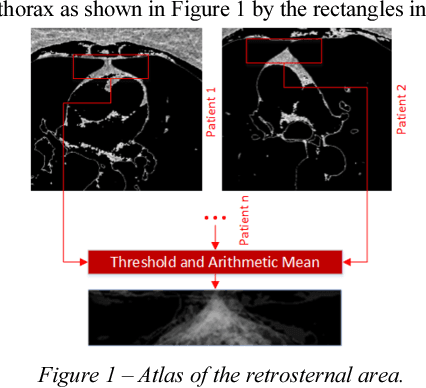
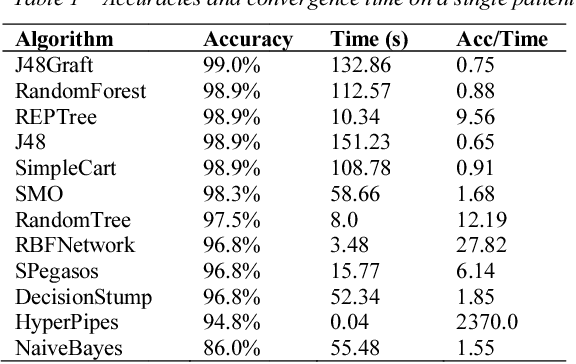
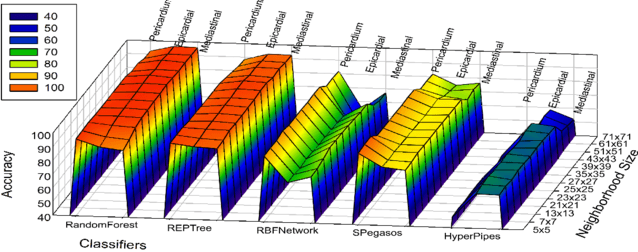
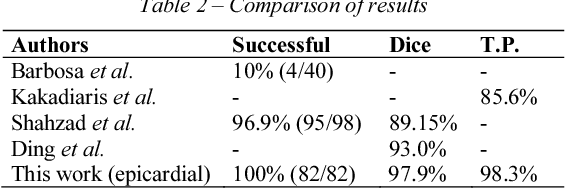
Abstract:The quantification of fat depots on the surroundings of the heart is an accurate procedure for evaluating health risk factors correlated with several diseases. However, this type of evaluation is not widely employed in clinical practice due to the required human workload. This work proposes a novel technique for the automatic segmentation of cardiac fat pads. The technique is based on applying classification algorithms to the segmentation of cardiac CT images. Furthermore, we extensively evaluate the performance of several algorithms on this task and discuss which provided better predictive models. Experimental results have shown that the mean accuracy for the classification of epicardial and mediastinal fats has been 98.4% with a mean true positive rate of 96.2%. On average, the Dice similarity index, regarding the segmented patients and the ground truth, was equal to 96.8%. Therfore, our technique has achieved the most accurate results for the automatic segmentation of cardiac fats, to date.
A novel approach for the automated segmentation and volume quantification of cardiac fats on computed tomography
Dec 21, 2021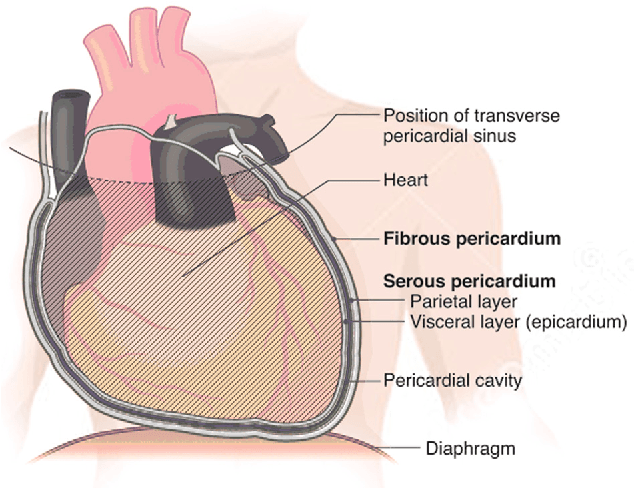
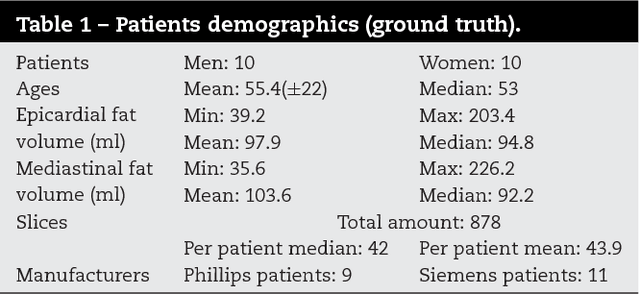
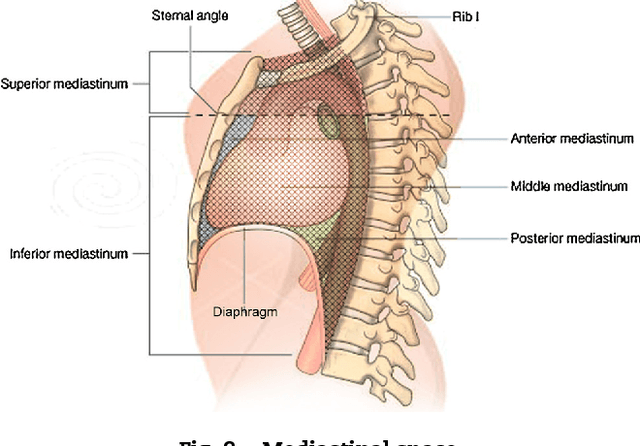

Abstract:The deposits of fat on the surroundings of the heart are correlated to several health risk factors such as atherosclerosis, carotid stiffness, coronary artery calcification, atrial fibrillation and many others. These deposits vary unrelated to obesity, which reinforces its direct segmentation for further quantification. However, manual segmentation of these fats has not been widely deployed in clinical practice due to the required human workload and consequential high cost of physicians and technicians. In this work, we propose a unified method for an autonomous segmentation and quantification of two types of cardiac fats. The segmented fats are termed epicardial and mediastinal, and stand apart from each other by the pericardium. Much effort was devoted to achieve minimal user intervention. The proposed methodology mainly comprises registration and classification algorithms to perform the desired segmentation. We compare the performance of several classification algorithms on this task, including neural networks, probabilistic models and decision tree algorithms. Experimental results of the proposed methodology have shown that the mean accuracy regarding both epicardial and mediastinal fats is 98.5% (99.5% if the features are normalized), with a mean true positive rate of 98.0%. In average, the Dice similarity index was equal to 97.6%.
 Add to Chrome
Add to Chrome Add to Firefox
Add to Firefox Add to Edge
Add to Edge